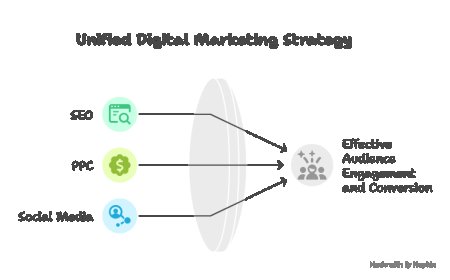Swollen Hands, Ankles, or Feet? 7 Possible Reasons & Fixes
Experiencing swelling in your hands, ankles, or feet? Discover 7 possible reasons and how Pregabalin 300 mg can offer lasting relief by calming nerve-related discomfort. Human-friendly guide + FAQs.
Swelling in your hands, ankles, or feet can feel alarming, especially when it appears without warning. Whether it's a mild puffiness or a painful ballooning of your limbs, it signals that your body needs attention. Lets break down seven possible reasons for these symptoms and how Pregabalin 300 mga nerve-calming medicationmay help in certain cases.
Thisbookiswrittento besimple,plainEnglish, andaimedatpeoplewhoseekanswers, notdoctorspeak.Solet'sget started.
1. Nerve Pain or Neuropathy ASneakyOffender
When swellinghappenswithoutinjuryortrauma, oneverycommon butfrequentlymissedreasonis nerve damage,particularlyperipheral neuropathy.Itisverycommonindiabetics, sciatica, orongoingnerve pain.Yourbrainreceivestheincorrectmessagesfromdamagednervesandcanproduceunusualsensationssuchasswelling, burning, tingling, or heaviness in theextremities.
? Fix:
Physicianscanprescribe Pregabalin 300 mg,whichis famousforsoothinghyperactivenerves. Itpreventsthe abnormalnerveelectrical activity thatcausesswelling andpain in the nerves. ThePregabalinactive ingredientismostusefulintreatingdiabetic nerve pain, fibromyalgia, andpain due tospinal cord injury.
2. Fluid RetentionEdema
At times,your bodyretainsexcessfluid, knownasedema. Itmaybecausedbyhormonalimbalances,sittingorstandingfortoo long, orfoodintake(suchasexcessivesaltconsumption). Theexcessfluidisstoredin the soft tissue,especiallyinyour ankles, feet, and hands,causingthemtofeel stiff orpuffy.
? Fix:
Mildwaterretentionusuallygetsbetterwithlifechangesrestrictingsalt,raisingthe feet, orexercisingmorefrequently. Incertainchronicconditionswhereedema ofnerveoriginis also present, Pregabalin 300 mgcanhelpto minimizeboth pain and therelatedinflammation. Alwaysseeadoctorbeforeinitiatingordiscontinuingmedication.
3. Fibromyalgia The Swelling You Cant See on Scans
Fibromyalgiacannotbeseenon X-rays orlabtests, but itisasrealascanbe.Sufferersusuallywakeup withtender, stiff, and swollen hands or feet, withno physicaltrauma.
? Fix:
Pregabalin,which isthe active ingredient in Pregabalin 300 mg, is FDA-approved fortreatingfibromyalgia. Itbalancesthe nervous system,decreasessensitivity topain, anddiminishesthefeelingof swelling even when thereisno visible inflammation.
PatientstakingPregabalin 300 mgoftencomplainofsleeping better andhavinggreatercontrolovertheir symptoms. Itprovidesboth painreductionandenhancesoverall function.
4. Injury or Overuse
Thesolutionmightbe as easy as this: you twisted your ankle,overdidthewalkingin tight shoes, orover-exercised. Even minor sprains or repetitive strain cancauseswelling in theextremities.
? Fix:
In these cases, rest, ice, elevation, and compression typically do the trick. However, if the pain persists and becomes nerve-relatedlike burning or radiating painthen a doctor might explore options like Pregabalin for long-term relief.
5. Lymphedema When Your Lymph System Slows Down
If youve had surgery, radiation, or certain infections, your lymphatic system may struggle to drain properly. This causes a backup of lymph fluid, especially in the arms and legs.
? Fix:
Manual lymphatic drainage, compressionstockings, andspecificphysical therapy canbe beneficial. Ifthere is associatednerve pain or burning, Pregabalin 300 mgcanbeprescribedby yourphysiciantosoothethe discomfort andenhancemobility.
6. Arthritis with Nerve Involvement
Osteoarthritis or rheumatoid arthritismaycauseswelling in thehandandfootjoints. Inothers, inflammationpressesagainstadjacentnerves,causingneuropathic paininadditiontojoint pain.
? Fix:
Whereasconventionalarthritisdrugsfocusoninflammation,physiciansmightincludePregabalin if there'spaindue to nerves.Withtheapplication ofPregabalin 300 mg,numerouspatientsexperiencelessswellingfeelingandmoreeffectivejoint function,particularlywhen stiffnessoccurswithnerve-like tingling or burning.
7. Medication Side Effects or Withdrawal
Swelling can also arise from reactions to certain medications or stopping them too quickly. Not all medications suit everybody, and the feet, ankles, and hands are often the first places to show signs of trouble.
? Fix:
Alwayscheckwithyourphysicianif youdevelopnew swellingwhenyoubeginordiscontinuemedication. Forindividualswhohavediabetes or othernerve-relatedwithdrawalsymptoms(suchasfrom older anticonvulsants),changingto Pregabalin 300 mgmightprovideasteadieralternativewith better nervemanagement.
Why Consider Pregabalin 300 mg?
Pregabalin 300 mg is atypicaldosage forindividualsexperiencingmoderate to severe nervepain.Itsactive ingredient, Pregabalin,bindsto calcium channels in the nervous system,effectively"muzzling"theerrantnerves thattransmitpain, tingling, or swelling.
Regardless ofwhether your symptomsareduetofibromyalgia, nerve compression, or diabetic neuropathy, Pregabalin 300 mg hasprovento:
-
Decreaseabnormal swellingduetonerve signals
-
Enhancesleep andmobilityduringtheday
-
Decrease totalpainseverity
-
Help manage chronic nerve-based discomfort
It'snotanactualpainkillerperseit doesn'tsuppresspain like opioids.Rather, itaddressesthecauseof nerve-based symptoms.
Real Talk: When to See a Doctor
If youdevelopsudden orextremeswellingparticularlywith chest pain, shortness of breath, orchanges in theskingetmedicalassistanceimmediately.AlthoughmedicinessuchasPregabalin 300 mgmayrelievechronic or nerve-related symptoms, theyarenotemergencytreatments.
However,forextendedrelief andtreatmentofpersistent, nerve-involvingswelling andpain,discusswithyourphysicianwhether Pregabalinmightbeindicatedfor you.
FAQs (One-Liners)
Q1: Can swelling be a symptom of nerve-related problems?
A: Yes, nerve pain or neuropathy can create a sensation of swelling even when no visible inflammation exists.
Q2: Does Pregabalin 300 mg reduce swelling caused by fibromyalgia?
A: Yes, it helps relieve the nerve pain and sensory swelling linked with fibromyalgia.
Q3: How is Pregabalin 300 mg different from regular painkillers?
A: Unlike standard painkillers, it targets nerve signals rather than just masking pain.
Q4: Will Pregabalin 300 mg make me feel drowsy?
A: It might in the beginning, but most people adjust within a few days.
Q5: Can Pregabalin 300 mg be used for swelling after nerve injury?
A: Yes, its often prescribed when nerve injury causes chronic pain or swelling-like sensations.
Q6: Is Pregabalin 300 mg helpful for swelling without pain?
A: Its most effective when swelling is paired with nerve pain, burning, or tingling.
Q7: How long do I need to take Pregabalin 300 mg to see results?
A: Some users feel relief within days, but full effects usually appear after 12 weeks.
Q8: Is Pregabalin 300 mg addictive?
A: It has a low risk of dependence when taken exactly as prescribed.
Q9: Can I take Pregabalin 300 mg for foot swelling due to diabetes?
A: Yes, especially if the swelling is linked to diabetic nerve pain (neuropathy).
Q10: Should I stop Pregabalin 300 mg suddenly if I feel better?
A: No, always taper it off under your doctors guidance to avoid withdrawal symptoms.




























